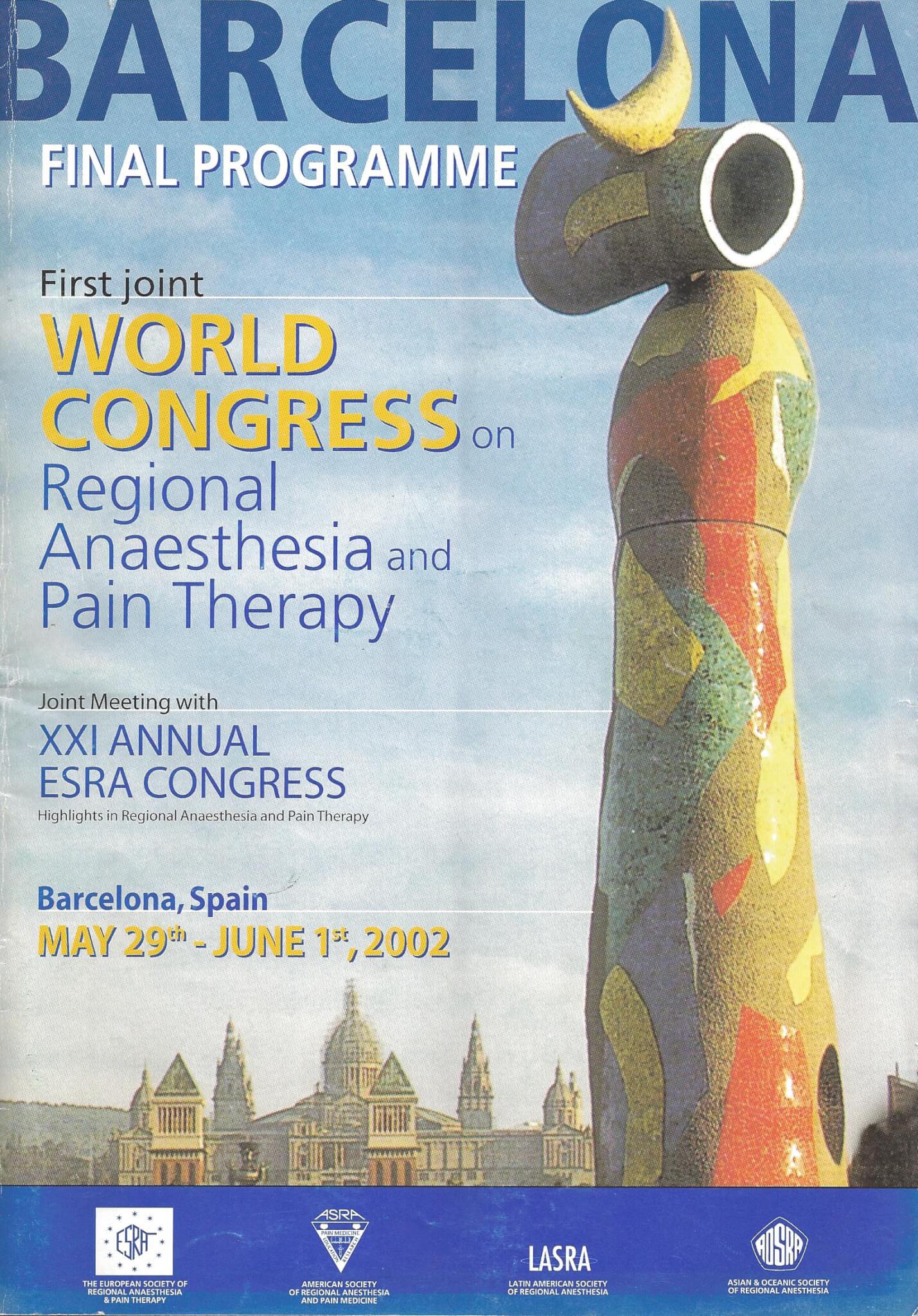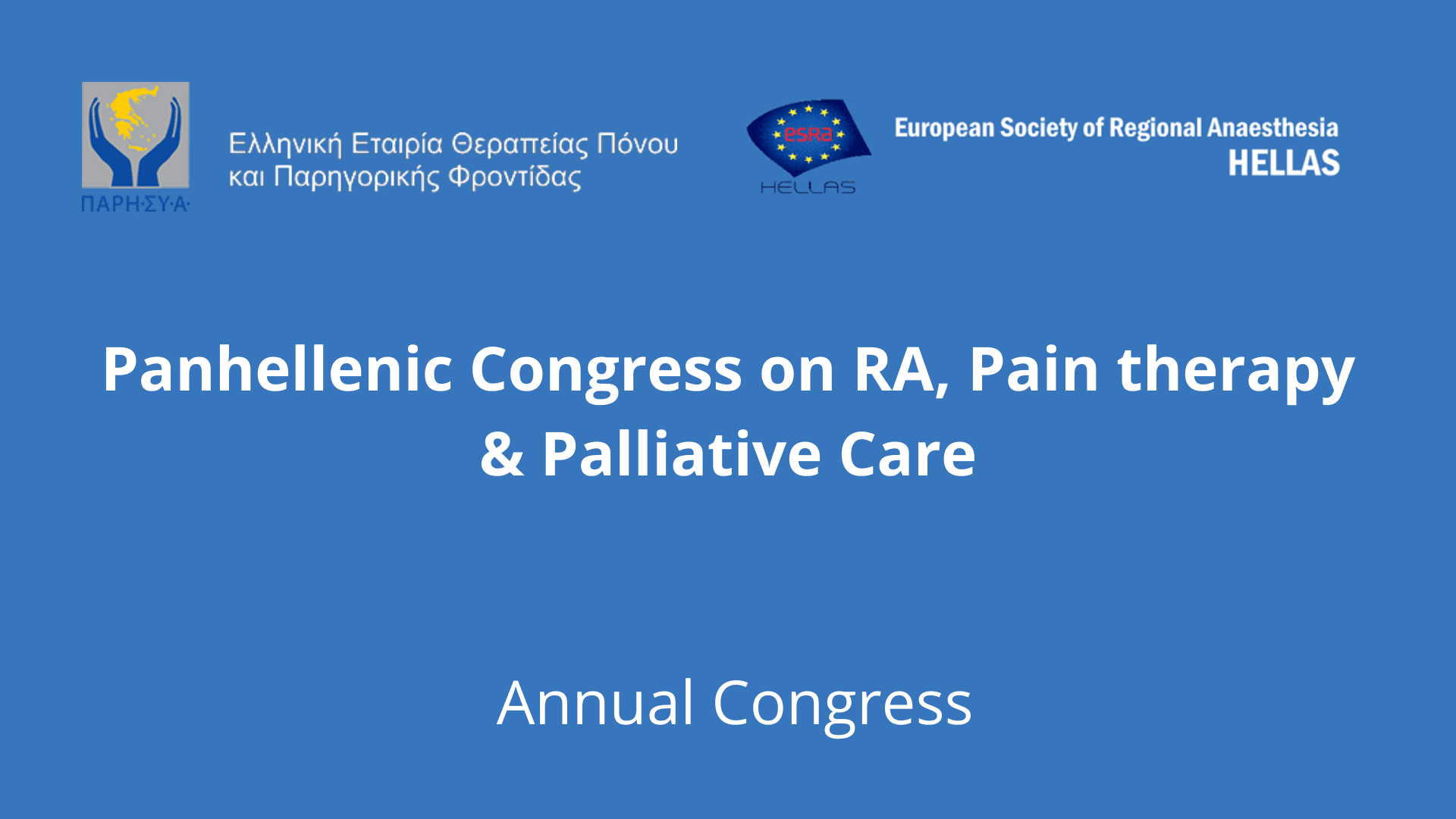EPIDURAL STEROIDS HAVE AN IMPORTANT ROLE IN CHRONIC PAIN MANAGEMENT: PRO

ESRA Highlights
21st Annual ESRA Congress
29th May – 1st June, 2002, Barcelona, Spain
Congress Highlights
EPIDURAL STEROIDS HAVE AN IMPORTANT ROLE IN CHRONIC PAIN MANAGEMENT: PRO
Athina Vadalouca
Aretaieion University Hospital
Athens, Greece
For full text in pdf form click here.
The use of epidural steroid (ES) injections as a treatment of lumbosacral radicular and discogenic pain has been established for the last forty years. Epidural steroids relieve pain by reducing inflammation and by blocking the transmission of nociceptive C – fiber input [1].
Epidural steroid injections are a valuable treatment alternative for patients in whom there is reasonable evidence of nerve root irritations and when such therapy is provided within the intellectual context of a pain management program.
Back in 1934, Mixter and Barr suggested that the mechanical compression of the root by a herniated disk causes radicular pain [2]. Later in 1950, Kelly suggested that not only the compression but also subsequent inflammation were responsible for the pain [3].
The research of Lindal and Reed (1950) demonstrated histologically that inflammation was evident in the nerve root of patients with sciatica presented for operative procedures [4]. This research supports Kelly’s notion.
The inflammation theory was documented by the correlation of clinical symptoms of patients undergoing operations for herniated discs, with histological evidence of inflammation in the relevant spinal nerve root.
Mc Carron et al used the injection of autoIogous nucleus pulposus (ΝΡ) into the epidural space of dogs. After the injection, which the dogs received for five days, the authors found, following microscopic analysis, intense spinal cord and nerve root inflammation. The findings were compared with animals in the control group, which had received epidurally normal saline. Νο signs of inflammation were recorded [5]. This very important study makes clear that a small amount of nucleus pulposus may result in an extensive inflammatory response. In clinical practice, a small amount of ΝΡ that cannot be detected by routine laboratory examinations causes clinical symptoms of radiculopathy.
Within the disk material, there is a high concentration of phospholipase Α2 (PLA – 2) (and other enzymes). Phospholipase Α2 is an enzyme that liberates arachidonic acid from cell membranes. The symptoms of radicular pain are due to the toxic spill of PLA – 2, even in small amounts, provoking an intense inflammatory reaction in the surrounding neural tissue [5, 6].
Lee et al (1998), in order to clarify the possible role of PLA – 2 for lumbar radiculopathy and mechanisms of epidural steroid injections, concluded that the behavioral pattern changes observed in the irritated nerve root model are caused in part by a high level of PLA – 2 activity initiated by inflammation and that the mechanism of action of epidural steroid injection is inhibition of phospholipase Α2 activity [7].
Rowlingson (1996) stated that epidural steroid injections are important in achieving the goals of acute and chronic pain management [8].
He believes that with proper patient selection, the data show that in approximately 66% of the patients the period of illness is shortened and the decreased frequency and intensity of pain allows for more rapid physical rehabilitation, shorter hospital stays and greater ability to function and to return to work.
Last year Mulligan and Rowlingson stated that refinements in our understanding of the pathophysiology of radicular pain and in the techniques used to deliver depo – steroids to the target tissue will lead to improved clinical outcomes and drug – related side effects. They concluded that comparative studies are necessary to clearly define the advantages and disadvantages of the use of fluoroscopy and the transforaminal technique [9].
The particular technique to be performed must be chosen on the basis of being the one with the least number of potential complications [10].
In order for the epidural steroid treatment to be more effective, many pain management physicians in the United States, use the following list of recommendations [11]: a) Limit use to patients with evidence for radiculopathy, b) Look for contraindications to steroid use or epidural injection (infection, coagulopathy, history of untoward reaction to steroids), c) Consider added risks of steroid use in diabetic patients, d) Assess factors that reduce chances for success (long symptom duration, previous surgery, history of substance abuse, preoccupation with vocational issues, heavy smoking), e) Use moderate doses of steroids (50 mg triamcinolone diacetate, 80 mg methylprednisolone acetate), f) Perform minimum number if injection needed for symptomatic relief. If one or two injections provide dramatic relief, further procedures are not indicated.
References
-
Vadalouca Α. Epidural Steroids. Highlights in Pain Therapy and Regional Anaesthesia, Permanyer Publications, 2000; ΙΧ: 86 – 91
-
Mixter WJ, Barr JS. Rupture of the intervertebral disc with involvement of the spinal cord. Ν Engl J Med, 1934; 211: 210 – 215.
-
Kelly Μ. Pain due to pressure on nerves? Spinal tumors and the intervertebral disc. Neurology, 1956; 6: 32 – 36.
-
Lindahl 0, Rexed Β. Histologic changes in spinal nerve roots of operated cases of sciatica. Acta Orthop Scand, 1951; 20: 215 – 225.
-
Mac Carron RF, Wimpee MW, Hudkins PG et al. The inflammatory effect of nucleus pulposus: a possible element in the pathogenesis of low-back pain. Spine, 1987; 12: 760 – 764.
-
Saal JS. The role of inflammation in lumbar pain. Phys Med Rehab, 1990; 4: 191 – 198.
-
Lee ΗΜ, Weinstein JN, Meller ST, Hayashi Ν, Spratt KF, GebhaIt GF. The role of steroids and their effects on phospolipase Α2. An animal model of radiculopathy. Spine, 1998; 23 (11): 1191 – 1196.
-
Rowlingson CJ. Epidural steroids: Do they have a place in pain management? Highlights in Pain Therapy and Regional Anaesthesia. Permanyer Publications, 1996; V: 21 – 35.
-
Mulligan ΚΑ, Rowlingson JC. Epidural steroids. Curr Pain Headache Rep, 2001; 5 (6): 495 – 502.
-
McGregor ΑΗ, Anjarwalla ΝK, Stambach Τ. Does the method of injection alter the outcome of epidural injections? J Spinal Disord, 2001; 14 (6): 507 – 510.
- AbIam ES. Controversies epidural steroid injections. 25th ASRA Congress. 30th March – 2nd April 2000, Orlando, Florida, Syllabus, pages 75 – 79.






